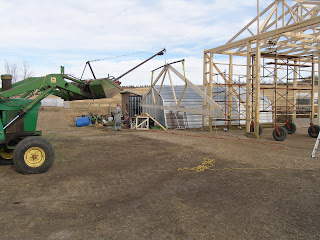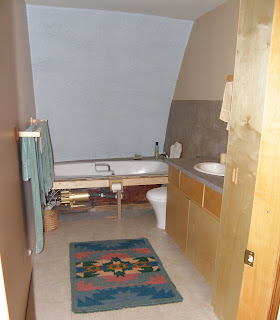For those of you following this blog, not much work gets done on the inside of the dome in the spring and summer because we are outdoors. This spring, we are in the process of getting up a second greenhouse, and we are getting our pasture ready to rent out. A friend of ours wants to put some cow/calf pairs there. That is great with me, I love seeing the calves, but we needed to tighten up the fence and do some repairs. The fence is mostly done, so we have turned our attention to the second greenhouse. I will post some pictures soon. A friend of ours gave us the frame from one of those 'instant garages'. He had it over his hot tub. After a number of years, the tarp disintegrated. He did not want to replace the tarp, so he have us the frame. For less than $300 we bought enough greenhouse plastic to cover it. My husband is working on that now. The garden is mostly in, but it has been very cool here in central Canada. There is still a frost warning for this evening!
The good news is that my first greenhouse is warm and toasty. I have tomatoes, sweet red peppers and two types of cucumbers planted in there. I have some long green ones and some pickling ones. Once the second greenhouse is finished, my husband will return to working on the garage/shop. I keep reminding him that that is the priority for this summer.


















































